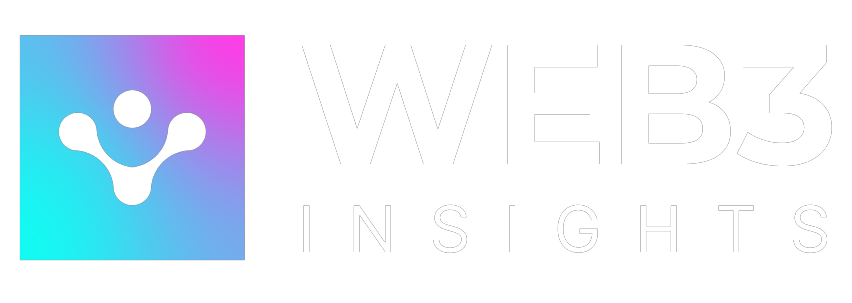
New to investing? ETFs are one of the easiest ways to get started in 2025, and that includes the growing world of crypto ETFs like Bitcoin and Ethereum. They’re built for simplicity: instead of picking individual stocks or tokens, you buy one fund that spreads your money across many assets. That’s instant diversification without the stress of daily trading.
Traditional ETFs like the S&P 500 or Total Market ETFs are still the go-to for beginners. They’re stable, low-cost, and give you exposure to the biggest companies in the world. But the new era of ETFs is expanding fast. You can now invest in Web3, crypto, and blockchain innovation with the same simplicity.
Whether your goal is steady growth, learning the ropes, or exploring digital assets, ETFs give you a smooth entry point. You don’t need to time the market or become an expert overnight, just choose the right mix and stay consistent.
Let’s break down the best ETFs for beginners in 2025, from classic index funds to the new generation of crypto-backed options that are changing how people start investing.
Top ETFs for Beginners

When you’re just starting out, the best ETFs are the ones that are simple, reliable, and affordable. You don’t need to chase complicated strategies, the goal is to build a foundation that helps your money grow steadily over time. Here are some top ETFs beginners love in 2025:
1. SPDR S&P 500 ETF (SPY)
This one’s a classic. SPY tracks the S&P 500 index, basically, the 500 biggest companies in the U.S. Think Apple, Microsoft, Amazon, and others. It’s like owning a small piece of every major brand that drives the U.S. economy. It’s low-cost, highly liquid, and has decades of performance data behind it.
2. Vanguard Total Stock Market ETF (VTI)
VTI takes diversification a step further. Instead of just the top 500 companies, it covers nearly the entire U.S. stock market, from giants to smaller firms. If you want broad exposure with minimal effort, this is a go-to choice. It’s also known for ultra-low fees, which means more of your returns stay with you.
3. iShares Core U.S. Aggregate Bond ETF (AGG)
Every beginner’s portfolio needs a little stability, and AGG offers that. It invests in high-quality bonds, balancing out the ups and downs of the stock market. Many beginners use it to keep part of their portfolio safe and steady while still earning interest.
4. Bitwise Bitcoin ETF (BITB)
Crypto ETFs are now beginner-friendly too. BITB gives you exposure to Bitcoin without needing to manage a wallet or deal with exchanges. It trades on regular stock markets like any other ETF. If you’re curious about digital assets but want to keep things simple, this one bridges that gap.
5. Global X Web3 ETF (BWEB)
This ETF focuses on blockchain, crypto infrastructure, and the companies building the future of the internet. It’s riskier than the traditional ones above, but it gives you access to a fast-growing corner of the market.
All these ETFs share one thing, simplicity. They’re built to help you start investing with confidence, whether you’re focused on traditional markets or exploring Web3.
How to Choose the Right ETF

Picking your first ETF can feel overwhelming. There are thousands out there, all promising great returns and “diversification.” But the truth is, choosing the right one really comes down to a few key things: your goals, your risk comfort, and how hands-on you want to be.
If you’re the kind of investor who just wants something simple and steady, go for broad-market ETFs like SPY (tracks the S&P 500) or VTI (covers the entire U.S. stock market). They’re low-cost, highly liquid, and built to mirror the overall market’s performance. Think of them as your “set it and forget it” options.
But if you’re curious about the Web3 space and want to dip into digital assets, crypto ETFs like IBIT or GDLC are a safer entry point than going directly through exchanges. They give you exposure to Bitcoin and other cryptocurrencies while keeping things familiar, you still trade them on regular stock platforms.
Here’s a quick guide to help you decide:
| ETF Type | Best For | Expense Ratio Range | Risk Level | Example |
| Broad Market ETFs | Long-term stability, passive investing | 0.03–0.10% | Low | SPY, VTI |
| Sector ETFs | Focused exposure (tech, energy, etc.) | 0.1–0.5% | Medium | XLK, XLE |
| Crypto ETFs | Digital assets, Web3 exposure | 0.25–1% | High | IBIT, GDLC |
| Income ETFs | Monthly income, steady returns | 0.7–1% | Medium | BTCI, YBTC |
When comparing ETFs, look at the fees (expense ratio), even small differences add up over time. Then check liquidity (the bigger the fund, the easier it is to trade) and track record (how long it’s been around, how it’s performed).
If you’re new, start with one or two solid funds and learn as you go. ETFs aren’t about chasing quick wins, they’re about growing steadily, one position at a time.
Web3 ETFs for Beginners

So you’ve wrapped your head around traditional ETFs, now let’s talk about the next big frontier: Web3 ETFs.
These funds are built for people who believe in the future of crypto but don’t want the chaos of managing wallets, private keys, or exchanges. A Web3 ETF lets you invest in blockchain innovation the same way you’d invest in the S&P 500, through your regular brokerage account.
Take the iShares Bitcoin Trust (IBIT) for example. It’s one of the biggest crypto ETFs in the world, managing nearly $89 billion in assets with a tiny 0.25% fee. Then there’s the Grayscale CoinDesk Crypto 5 ETF (GDLC), which spreads your money across five major crypto assets, giving you diversified exposure to the space.
If you prefer a strategy-focused approach, the Global X Bitcoin Covered Call ETF (BCCC) or Roundhill Bitcoin Covered Call Strategy ETF (YBTC) blend Bitcoin exposure with options income, great for investors who want yield while staying in crypto. And for those eyeing steady returns, the NEOS Bitcoin High Income ETF (BTCI) does exactly what its name suggests: combines Bitcoin exposure with high-income strategies.
Here’s a quick snapshot:
| ETF | Expense Ratio | Market Value |
| iShares Bitcoin Trust (IBIT) | 0.25% | $88.9B |
| Grayscale CoinDesk Crypto 5 (GDLC) | 0.59% | $637M |
| Global X Bitcoin Covered Call (BCCC) | 0.75% | $12.9M |
| Roundhill Bitcoin Covered Call (YBTC) | 0.96% | $286.6M |
| NEOS Bitcoin High Income (BTCI) | 0.98% | $834.8M |
Even though crypto ETFs are still young, their growth has been explosive, and that’s just the start. As blockchain adoption continues to rise, Web3 ETFs could become the bridge between traditional investing and the decentralized future.
If you’re a beginner, you don’t need to go all in. A small allocation to one of these ETFs is enough to give you exposure to the world of digital assets, without the learning curve of direct crypto trading.
FAQ: Best ETFs for Beginners

1. What’s the best ETF for small budgets?
If you’re starting with a small amount, look for ETFs with no minimum investment and low share prices. Funds like VTI or VOO are great because you can buy fractional shares on most platforms. Even $10 can get you started.
2. Are crypto ETFs good for beginners?
Yes, especially if you’re curious about crypto but don’t want to deal with exchanges or wallets. Bitcoin ETFs like IBIT let you invest in Bitcoin directly from your brokerage account. They’re regulated, transparent, and easier to understand than direct crypto trading.
3. How do I buy ETFs?
ETFs trade just like stocks. You can buy them through your preferred brokerage (e.g., Vanguard, Fidelity, Robinhood) using their ticker symbol. Simply type the ETF name, for example, SPY or IBIT and place a buy order.
4. What makes ETFs better for beginners than mutual funds?
ETFs are cheaper, easier to trade, and more flexible. Unlike mutual funds, which only trade once a day, ETFs let you buy and sell anytime the market’s open, no waiting around.
5. Can I lose money with ETFs?
Yes, like any investment, ETFs carry risk. But diversified ETFs; especially those tracking large indexes, spread your risk across hundreds of assets. The key is to invest long-term and avoid emotional trading.
6. How many ETFs should a beginner own?
One or two well-chosen ETFs are enough when you’re starting. Begin with a broad-market fund and add a Web3 or sector ETF later as you learn more.
Conclusion
ETFs make investing simple; no jargon, no guessing games, just smart exposure to the markets you care about. For beginners, they’re the perfect way to build a portfolio that grows with you. Whether it’s a classic index fund like SPY or a modern option like IBIT for crypto exposure, the goal is the same: start small, stay consistent, and let time do the heavy lifting.








